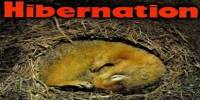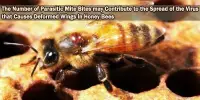A groundbreaking eight-year study discovered widespread and regular lead poisoning in North American bald and golden eagles, threatening the populations of both species. The study was published in the journal Science with the title “Demographic Implications of Lead Poisoning for Eagles Across North America.”
From 2010 to 2018, researchers led by scientists from the US Geological Survey, Conservation Science Global, Inc., and the US Fish and Wildlife Service assessed lead exposure in bald and golden eagles.
“Studies have shown lethal effects to individual birds, but this new study is the first to show population-level consequences from lead poisoning to these majestic species at such a wide scale,” said Anne Kinsinger, USGS Associate Director for Ecosystems.
These findings are the first to look at bald and golden eagle populations across North America, with 1,210 eagles collected from 38 states, including Alaska. Poisoning at the levels identified in the study causes yearly population growth rates for bald and golden eagles to slow by 3.8 percent and 0.8 percent, respectively.
Golden eagles are one of North America’s largest birds. The wings are similar to those of a Red-tailed Hawk, except they are longer. The head looks small from a distance, and the tail is lengthy, protruding more behind than the head does in front.
Previously, only local and regional studies were conducted to assess lead exposure and its influence on eagle populations. This revolutionary study shows how lead poisoning stunts the population expansion of both species across North America.
The study’s modeling shows that lead reduces the rate of population growth for both of these protected species. That is not as impactful for bald eagles since this endemic species population is growing at 10 percent per year across the U.S. In contrast, the golden eagle’s population is not as stable, and any additional mortality could tip it towards a decline.
Brian Millsap
Most other raptors, such as the Turkey Vulture and Red-tailed Hawk, pale in comparison to the Bald Eagle. It has a huge head, a hefty body, and a long, hooked bill. A Bald Eagle in flight holds its broad wings flat like a board.
“This is the first study of lead poisoning of wildlife at a nationwide scale, and it demonstrates the unseen challenges facing these birds of prey. We now know more about how lead in our environment is negatively impacting North America’s eagles,” said Todd Katzner, USGS wildlife biologist, and lead USGS author.
Golden Eagles prefer open territory that is partially or entirely open, especially near mountains, hills, and cliffs. Tundra, shrublands, grasslands, coniferous woods, farming, and places along rivers and streams are among the environments they exploit, which range from arctic to desert. They are generally found in the western portion of the United States, and they are uncommon in the eastern states.
In this study, about half of the birds sampled exhibited signs of recurrent lead exposure. In the winter, short-term exposure was more common. Both eagles species are scavengers who feed on dead animals all year, but they rely on them much more during the winter months when live prey is scarce.
Bald Eagles can be found near lakes, reservoirs, rivers, marshes, and the seaside. In the winter, seek out wildlife refuges or huge bodies of water across much of the continent, or fish processing factories and dumpsters year-round in coastal Alaska and the Pacific Northwest for an opportunity to view enormous Bald Eagle communities.
As an eagle eats lead bullet bits lodged inside an animal carcass or in stomach piles left behind when game is dressed in the field, it becomes poisoned. Because lead accumulates in the bone as eagles are regularly exposed to heavy metals throughout their lives, the frequency of chronic lead poisoning in both species rose with age.
“The study’s modeling shows that lead reduces the rate of population growth for both of these protected species. That is not as impactful for bald eagles since this endemic species population is growing at 10 percent per year across the U.S. In contrast, the golden eagle’s population is not as stable, and any additional mortality could tip it towards a decline,” said Brian Millsap, U.S. Fish, and Wildlife Service National Raptor Coordinator and co-author.
Authors from academia, nonprofits, consultancy services, business, state, federal, and international agencies contributed to this study. Nonprofit foundations, as well as state and federal governments, contributed funding.
















